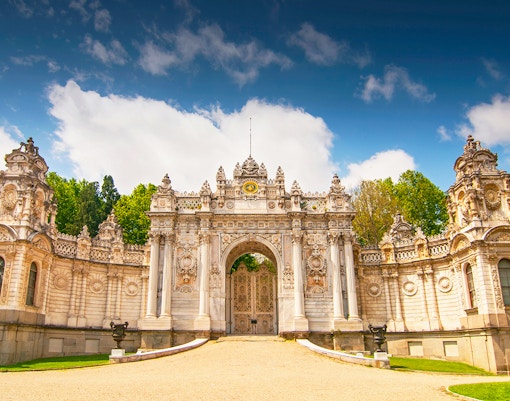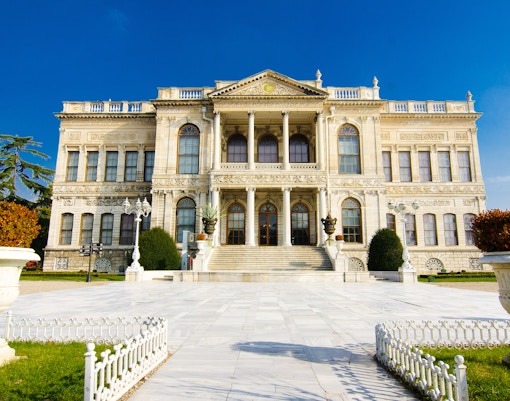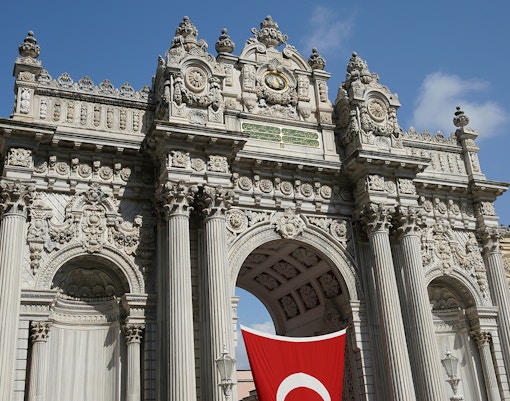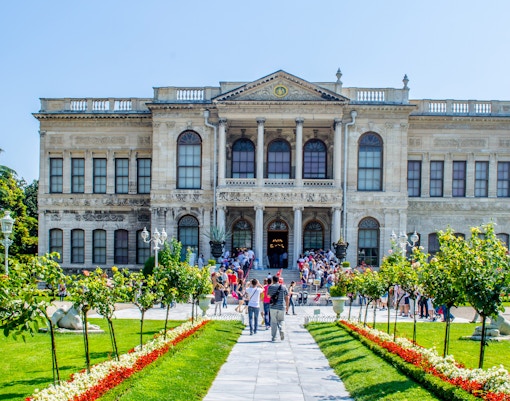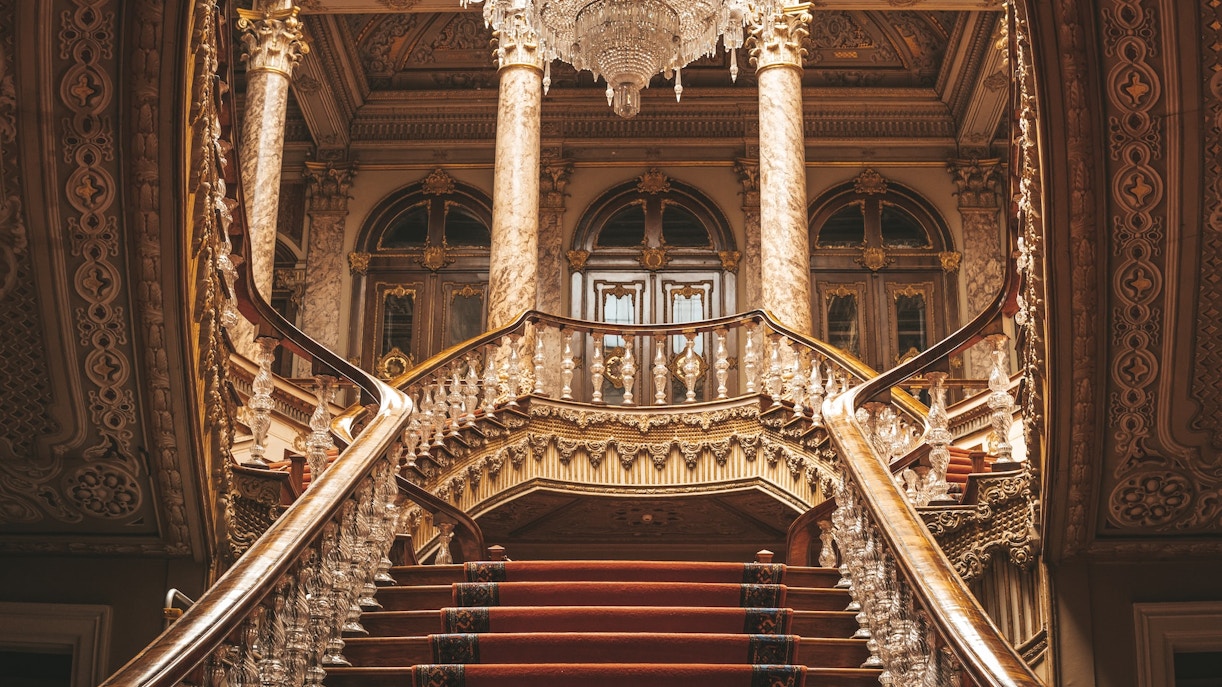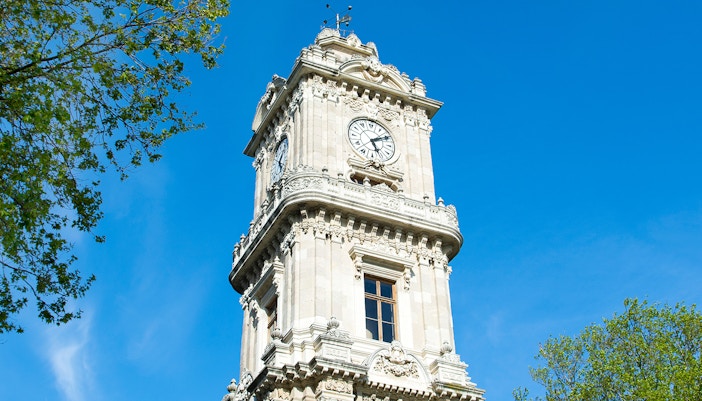Construction of Dolmabahce Palace
It took 13 years to complete the construction of Dolmabahce Palace, which was carried out from 1843 to 1856. Designed by architects Garabet and Nigogayos Balyan, it is built in the Neoclassical, Baroque, and Ottoman styles of architecture.
The palace's symmetrical layout comprises a central structure flanked by wings on either side. European motifs like columns and domes adorn the exterior, with a grand Baroque-influenced staircase leading to the Ceremonial Hall. The façade of the palace is ornately decorated, and the Ottoman touch is evident in the central dome.
The opulent interiors of Dolmabahce Palace showcase elements like the Crystal Staircase and the Ceremonial Hall's grand chandelier, which was a gift from Queen Victoria of Britain. Its lavish design incorporates intricate patterns, gilded mouldings, and luxurious furnishings, showcasing a harmonious blend of Ottoman and Western influences.
Dolmabahce Palace architecture
